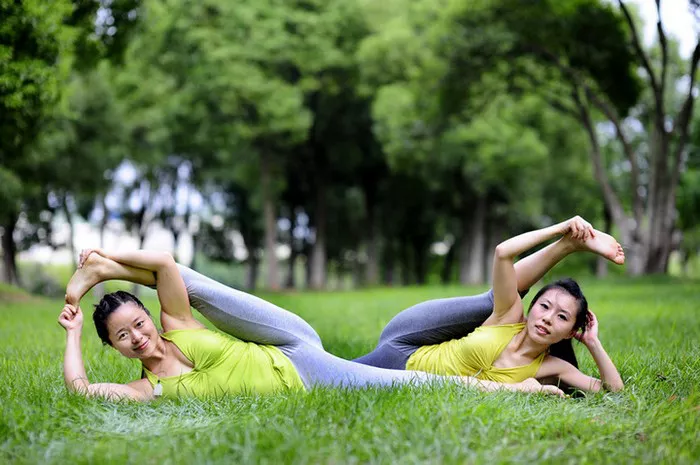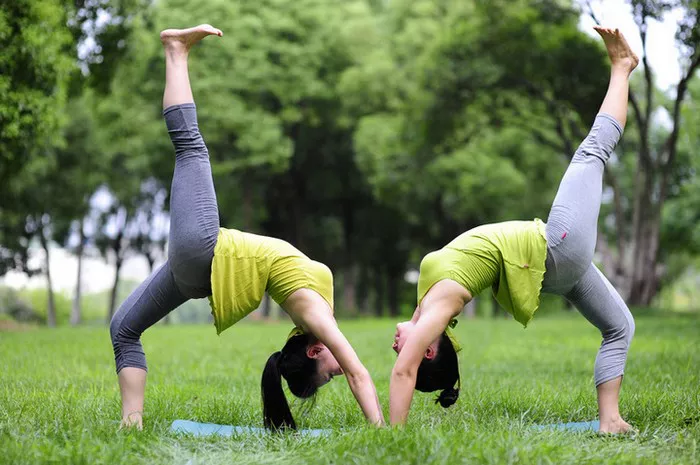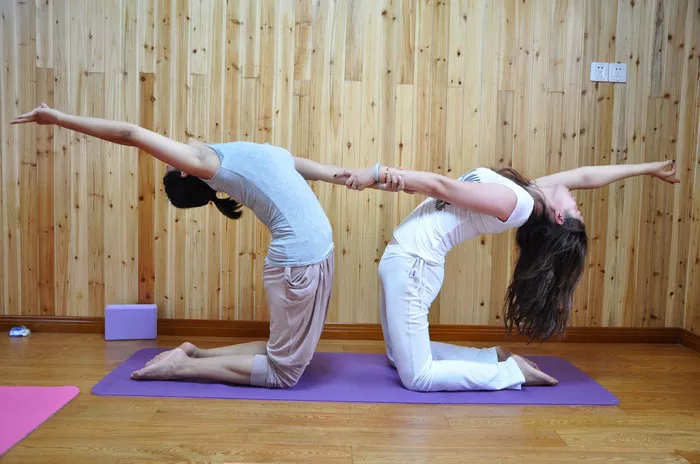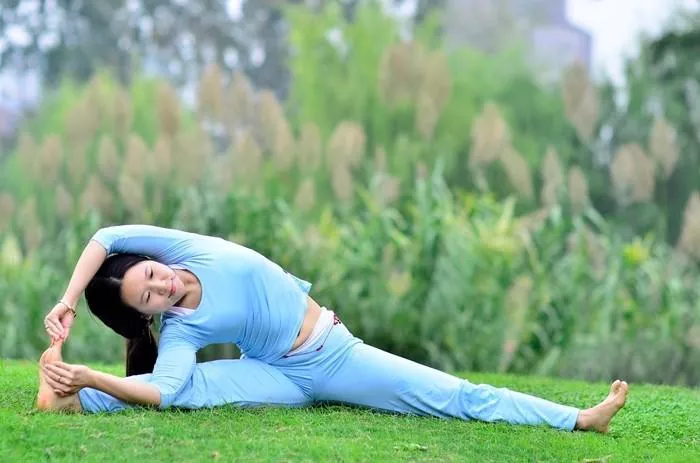Yoga is a deeply transformative practice that brings together the mind, body, and spirit in a harmonious way. With numerous styles and practices available, it’s easy to feel overwhelmed when trying to choose the right type of yoga for your needs. Among the many styles, Yin Yoga and Restorative Yoga are two practices that often confuse practitioners due to their similarities. However, despite their shared emphasis on relaxation and slow-paced movement, there are key differences in their philosophy, approach, and physical effects.
In this article, we’ll dive deep into the distinctions between Yin Yoga and Restorative Yoga. By understanding their individual characteristics, benefits, and who they are best suited for, you will be better equipped to choose the one that best supports your body, mind, and overall wellness.
Yin Yoga: A Deep Stretch for the Connective Tissues
Yin Yoga, a relatively modern style of yoga developed in the 1970s by Paul Grilley, is designed to target the deep connective tissues of the body, such as ligaments, joints, and fascia, as opposed to the muscles. It is a slow-paced practice characterized by long-held poses, often for 3-5 minutes or even longer. The idea is to stimulate the body’s deeper structures and promote greater flexibility and joint mobility.
Key Features of Yin Yoga:
Long Holds: Yin Yoga encourages holding each pose for a prolonged period, typically between 3 and 5 minutes, allowing the body to stretch deeply into the pose. This helps to apply gentle stress to the connective tissues, stimulating their release and growth over time.
Target Areas: Yin Yoga focuses on areas of the body where connective tissues are dense, such as the hips, pelvis, spine, and thighs. By focusing on these areas, Yin Yoga helps to improve flexibility, joint health, and mobility.
Energy Flow: Yin Yoga also incorporates the concept of energy flow, particularly through the meridian lines in the body, which are key to traditional Chinese medicine. The long holds and targeted stretches are intended to open energy channels, promoting balance and well-being.
Passive Stretches: Unlike more active yoga styles, Yin Yoga emphasizes passive stretching, where the muscles are allowed to relax while gravity does the work of stretching the deeper tissues.
Benefits of Yin Yoga:
Improved Flexibility and Joint Health: Regular practice of Yin Yoga helps to improve flexibility in the muscles and increase the range of motion in the joints. It is especially beneficial for people who sit for long periods or engage in strenuous physical activity.
Reduced Stress and Anxiety: The meditative nature of Yin Yoga promotes relaxation, helping to reduce stress, anxiety, and mental fatigue. The long holds and deep breathing practices also facilitate mindfulness, allowing practitioners to cultivate inner peace.
Enhanced Circulation and Energy Flow: By targeting the connective tissues and stimulating energy channels, Yin Yoga can improve circulation and the flow of energy throughout the body. This leads to improved vitality and overall well-being.
Who Should Practice Yin Yoga?
Yin Yoga is suitable for individuals who are looking to improve flexibility, manage stress, or release deep-seated tension in the body. It can be a great complement to more dynamic forms of exercise, such as running, cycling, or weightlifting, as it helps to stretch and release the connective tissues that may become tight due to more intense activities.
Additionally, Yin Yoga is often recommended for those with chronic pain or stiffness, as it allows for deep, targeted stretching that can alleviate discomfort over time.
Restorative Yoga: Rest and Recover for Body and Mind
Restorative Yoga, unlike Yin Yoga, is a deeply calming and restorative practice designed to encourage relaxation, rest, and healing. While it also involves holding poses for extended periods of time, the emphasis is not on deep stretching or targeting connective tissues. Instead, Restorative Yoga focuses on supporting the body in fully relaxed poses that allow the nervous system to reset and recover.
Key Features of Restorative Yoga:
Supportive Poses: Restorative Yoga poses are typically held for 5-10 minutes, but unlike Yin Yoga, these poses are fully supported by props such as blankets, bolsters, blocks, and straps. The goal is to ensure complete comfort, with the practitioner feeling no strain or discomfort during the practice.
Nervous System Regulation: The focus of Restorative Yoga is on calming the nervous system and bringing the body into a state of relaxation and rest. It activates the parasympathetic nervous system, also known as the “rest and digest” system, which counters the “fight or flight” stress response.
Gentle Movements: Restorative Yoga tends to be more passive than Yin Yoga. The movements are slow and gentle, and the practice often involves lying on the floor or sitting in easy, supported positions, making it highly accessible for people of all ages and abilities.
Mindfulness and Breathwork: Much of Restorative Yoga’s benefits come from its focus on mindfulness, meditation, and deep breathing. The practice encourages conscious, slow breathing to enhance relaxation, relieve tension, and create a meditative state.
Benefits of Restorative Yoga:
Stress Reduction and Relaxation: Restorative Yoga is incredibly effective at promoting relaxation. It helps to lower cortisol levels (the stress hormone) and calms the nervous system, which leads to a sense of deep peace and stress relief.
Better Sleep: Many practitioners find that Restorative Yoga improves their quality of sleep by encouraging the body to fully relax and let go of tension, making it easier to fall asleep and stay asleep.
Healing and Recovery: This practice is ideal for individuals recovering from injury, illness, or mental exhaustion. By promoting relaxation, Restorative Yoga helps the body and mind recover more quickly by reducing stress and boosting the immune system.
Increased Mind-Body Connection: Because Restorative Yoga involves long-held, comfortable poses that are supported by props, it encourages mindfulness and body awareness. Practitioners are encouraged to notice how their body feels in each pose and to stay connected to their breath.
Who Should Practice Restorative Yoga?
Restorative Yoga is ideal for those looking to manage stress, improve their sleep, or recover from physical or emotional fatigue. It is also an excellent practice for beginners or anyone dealing with physical injuries, chronic pain, or conditions that limit mobility, as the poses are designed to be fully supportive and non-straining.
People experiencing burnout, anxiety, or depression can also benefit from Restorative Yoga, as it helps to calm the mind and activate the body’s natural relaxation response.
Key Differences Between Yin Yoga and Restorative Yoga
While Yin Yoga and Restorative Yoga share some similarities in their slow-paced, mindful approach, they differ significantly in their goals, methods, and physiological effects.
1. Focus on the Body:
Yin Yoga targets the deep connective tissues, such as ligaments, tendons, and fascia, with the goal of improving flexibility and joint health. It involves deep, passive stretches that stress the connective tissues and promote their release and regeneration.
Restorative Yoga focuses on relaxation and recovery, using props to fully support the body in gentle, restorative poses. It is not about deep stretching but rather about nurturing and restoring the body and mind to a relaxed state.
2. Approach to Poses:
In Yin Yoga, poses are held for extended periods (typically 3-5 minutes) to stretch and stimulate the deeper tissues.
In Restorative Yoga, poses are supported with props and are held for longer durations (usually 5-10 minutes), but the focus is on comfort and relaxation, rather than deep physical stretching.
3. Physiological Effects:
Yin Yoga aims to increase flexibility and joint mobility by targeting the deep layers of the connective tissues, while also promoting the flow of energy through the body.
Restorative Yoga activates the parasympathetic nervous system, promoting a deep state of rest, relaxation, and stress relief, aiding in the recovery and healing process.
4. Energy and Mental Focus:
Yin Yoga has a meditative quality, and many practitioners experience an emotional release during long-held stretches, as it taps into deeper levels of mental and physical tension.
Restorative Yoga emphasizes deep relaxation and mindfulness, creating a safe, nurturing environment for the mind and body to let go of tension, stress, and anxiety.
Conclusion
Both Yin Yoga and Restorative Yoga offer valuable benefits for the mind and body, but their approaches differ significantly. If you’re looking to improve your flexibility, joint health, or release deep physical tension, Yin Yoga may be the ideal choice. On the other hand, if your goal is to deeply relax, reduce stress, and recover from physical or emotional exhaustion, Restorative Yoga might be more suitable.
Ultimately, both practices can complement each other, and incorporating elements of both into your regular yoga routine can help create a balanced practice that addresses both physical flexibility and mental relaxation. Whether you choose Yin Yoga, Restorative Yoga, or a combination of the two, remember that yoga is a personal journey, and the most important aspect is to listen to your body and choose the practice that supports your unique needs and goals.
Related Topics:



















